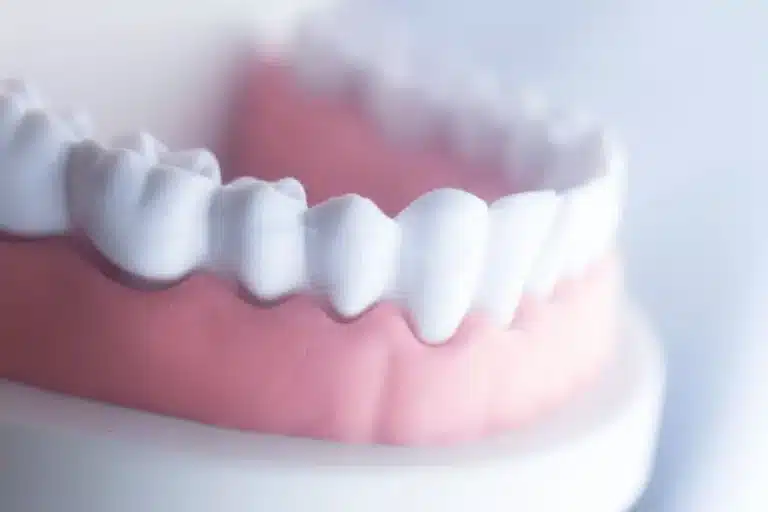The Future of Dental Restoration: Innovations in Dentistry
Dental restoration has come a long way since the ancient Egyptians used seashells and animal bones to replace missing teeth. From the development of the first dental implant in the 1950s to the use of 3D printing technology in modern dentistry, the field of dental restoration has continuously evolved and improved. As we look towards the future, it is clear that the advancements in dentistry will only continue to accelerate. With the growing demand for aesthetic and functional dental solutions, dentists and researchers are constantly striving to find new and innovative ways to restore and improve oral health. From virtual reality simulations for dental procedures to the use of stem cells in regenerating tooth tissue, the future of dental restoration is full of promising developments that have the potential to revolutionize the field. In this article, Dentist in Frisco we will explore some of the most exciting and groundbreaking innovations in dentistry that are paving the way for a brighter and healthier future for patients.
3D printing changing dental restoration
One of the most revolutionary advancements in dental restoration is the use of 3D printing technology. This technology allows dentists to create customized dental restorations, such as crowns, bridges, and dentures, with a high level of precision and accuracy. 3D printing also drastically reduces the time and cost associated with traditional methods of fabricating dental restorations. By using digital scans of a patient’s mouth, dentists can design and print a restoration in a matter of hours, rather than weeks. This not only improves the overall patient experience, but also allows for quicker and more efficient treatment. With 3D printing, dental restorations can be tailored to each individual’s unique needs, leading to better outcomes and a more natural-looking smile. As this technology continues to advance, the possibilities for dental restoration are endless and will undoubtedly continue to change the way we think about oral health.
Digital scanning for precise results
One of the most promising advancements in dental restoration is the use of digital scanning technology. This cutting-edge technology allows dentists to create precise and accurate 3D images of a patient’s teeth, gums, and surrounding structures. These digital scans can then be used to create customized restorations such as crowns, bridges, and dentures, using 3D printing technology. Not only does this process eliminate the need for messy and uncomfortable traditional impressions, but it also allows for faster and more efficient production of restorations. This means shorter wait times for patients and a more streamlined process for dentists. With digital scanning, the results are not only more precise, but also more convenient for both patients and dental professionals. It is truly a game-changing innovation in the field of dental restoration.
Natural-looking materials for restorations
Another important aspect of dental restoration is the use of natural-looking materials. In the past, materials such as metal and amalgam were commonly used for dental restorations, but they often stood out and didn’t blend in with natural teeth. However, with advancements in materials science, dentists now have access to a wide range of natural-looking materials that can be used to create restorations that are virtually indistinguishable from natural teeth. These materials include porcelain, ceramic, and composite resins, which not only mimic the appearance of natural teeth but also have similar strength and durability. This allows for a more seamless and aesthetically pleasing restoration that can restore both the form and function of a natural tooth. With the use of natural-looking materials, patients can feel confident and comfortable with their dental restorations, without having to worry about any noticeable differences between their restored and natural teeth.
Minimally invasive techniques emerging
Another trend that is emerging in the field of dental restoration is the use of minimally invasive techniques. This refers to procedures that require less cutting or removal of tooth structure, resulting in less pain, discomfort, and recovery time for patients. With the advancement of technology, dentists are now able to use smaller and more precise tools to perform procedures with minimal damage to surrounding tissues. This not only leads to a more comfortable experience for patients but also preserves more of the natural tooth structure, leading to better long-term oral health outcomes. With the rise of minimally invasive techniques, dental restoration is becoming less invasive and more patient-friendly, making it a more desirable solution for those seeking to improve their smiles.
Tele-dentistry expanding access to care
One of the most promising developments in dentistry is the use of tele-dentistry. This innovative approach allows dentists to provide virtual consultations and care to patients, expanding access to quality dental treatment. Through tele-dentistry, patients can receive expert advice, diagnosis, and treatment recommendations from the comfort of their own homes, eliminating the need to travel long distances or wait for appointments. This is particularly beneficial for those in rural or underserved areas who may have limited access to dental care. Tele-dentistry also allows dentists to monitor and follow up with patients remotely, ensuring continuity of care and improving overall oral health outcomes. With the continued advancements in technology, tele-dentistry has the potential to revolutionize the way dental care is delivered, making it more accessible and convenient for patients of all backgrounds.
Conclusion
As we have seen, the future of dental restoration is full of promising innovations that will greatly benefit both patients and dentists. From advanced technology such as 3D printing and digital scanning to new materials and techniques, the field of dentistry is constantly evolving to provide better and more efficient solutions for restoring oral health. It is an exciting time to be a part of this industry and we can look forward to even more advancements in the years to come. By staying informed and embracing new technologies, we can continue to improve the quality of dental care for patients and shape the future of dental restoration.







